Fundamentals and essentials
Software architecture
-
Structured solution to address all common software attributes:
- Meets all the requirements
- Performance optimized
- Security in check
- Manageability for developers
- Scalability for business growth
- Accessibility for easier user experience
-
Major requirements:
- User requirements – the way end-users interact with the system
- Business requirements – cheaper, faster, better than competitors
- IT system requirements – infrastructure requirements
What composes an architecture?
-
The structural elements and interfaces composing the system
- Objects – the low-level building blocks of the system
-
How these elements behave in collaboration
- How communication is done in the architecture
The composition of elements into larger subsystems * How the elements are mapped to trees or graphs – the high-level data structure
The architectural style that guides this composition
What composes an architecture?
-
Additionally, our design should cover:
- Functionality
- Usability
- Resilience
- Performance
- Economic and technology constraints
- Trade-offs and aesthetic concerns
-
The goal is to:
- Document high-level structure
- Do not go into implementation details
- Minimize complexity
- Address all requirements
- Be compatible with all use cases and scenarios
Our architecture needs
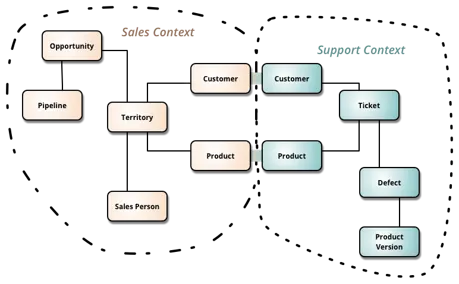
- Separation of Concerns
- Encapsulation
- Dependency Inversion
- Explicit Components
- Single Responsibility
- Don’t Repeat Yourself
- Persistence & Infrastructure Ignorance
- Presentation Ignorance
- Bounded Contexts
- Testability
Architecture abstraction
-
Layers:
- System, Sub-systems, Layers, Components, Classes, Data and Methods
-
Bad Architecture:
- Complex, Incoherent, Brittle, Untestable, Unmaintainable
-
Good Architecture:
- Simple, Understandable, Flexible, Testable, Maintainable
Software Architecture Design Tips
-
Build to change instead of building to last
- You are going to change your solution multiple times
- Create around modularity and flexibility
-
Use models, but only to analyze and reduce risk
- The models should be more abstract, otherwise you are taking the role of a developer
-
Use visualizations to communicate and collaborate
- Your architecture is going to be a large diagram
-
Identify and research critical points of failure
- Put in work in research in everything advanced
- Security, scalability, resiliency
Areas Of Software Architectures
- The goal of a software architect is to minimize complexity
- This can be accomplished by separating the design into different areas of concern
- Also known as modules (or components)
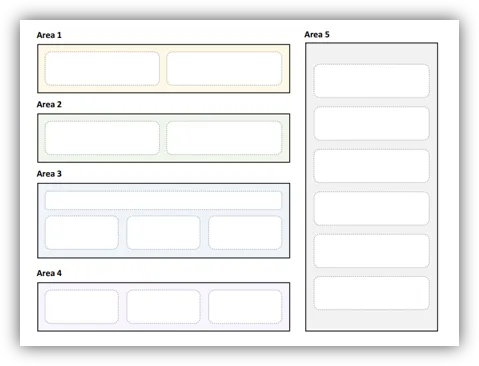
Key Principles Of Software Architectures
-
Separation of concerns
- Each object and module should be in its own concern and context
-
Single responsibility principle
- Elements in our design must have a single purpose
-
Principle of least knowledge
- Components do not know about the internals of other components
- Done through interfaces
-
Don’t repeat yourself
- Don’t have multiple components with the same purpose
-
Minimize upfront design
- Try to design the minimum architecture so that developers can work
- You will polish the next sections later
General Guidelines
-
Use consistent patterns in each layer
- If you decide to use MVC pattern in the presentation layer – stick to it
- If you use CQRS in the application layer – stick to it
-
Do not duplicate functionality
- Do not have a caching component in all layers
-
Prefer composition over inheritance
- It is complicated to create huge hierarchies
- Work with the Lead Developer here
-
Establish a code convention
- Define the code style and preferably automate it
- Work with the Lead Developer here
Layer Guidelines
-
Separate areas of concern
- Each layer should have one role only
-
Define communication between layers
- How does the presentation layer communicate with the business layer?
-
Use abstraction to loosely couple layers
- Use interfaces for every communication
- Objects should not be tight to a particular platform or technology
-
Don’t mix different types of components in a layer
-
Use a consistent data format within a layer
Component Guidelines
-
No component should rely on the internals of another
- Components should be black boxes
-
Do not mix roles in a single components
- Web controllers should not have business logic
- Business layer should not have HTTP concerns
-
Define clear contracts for components
- All public methods and properties should be scoped in advance
-
Abstract system wide components away from other layers
- As soon you have a component which is accessible in multiple layers
- Put it in a system-wide area of concern
Unified Modelling language
-
From Wikipedia:
A general-purpose, developmental, modeling language that is intended to provide a standard way to visualize the design of a system -
Main attributes:
- Visual – it is easy to see the representation of the architecture
- Abstract – it stays away from implementation details
- Descriptive – shows the complete representation
- Standard – UML is the world standard
- Supports Code Generation – specific sections can be converted to code
- Supports Reverse Engineering – create UML from code
-
You should know it in case the client wants it
- But can easily avoid it
UML design elements
-
Models
- Container for the design
- Are you looking at the entire system? A subsystem? A feature?
-
Views
- A way to look at the system
- Is it an external view? Or the internal structure?
-
Diagrams
- Specific drawings that illustrate the architecture
UML Model Types
-
Business System Model
- Non-technical model
- External View
- Looking at the system as a black box
- Internal View
- A lot more details
-
IT System Model
- Specifically looks at technology
- Static View (Structure View)
- How the different elements fit together
- Dynamic View (Behavioral View)
- How these elements call each other
UML Diagram Types
- Component Diagram
- Class Diagram
- Sequence Diagram
- State Diagram
- Activity Diagram
- Layer Diagram
- Use Case Diagram
- There are others…
The Component Diagram
-
Shows components
- Modular building blocks
-
Shows implemented and required interfaces
-
Components can be nested
-
If you decide to describe your architecture with a component diagram, you will have a very descriptive image
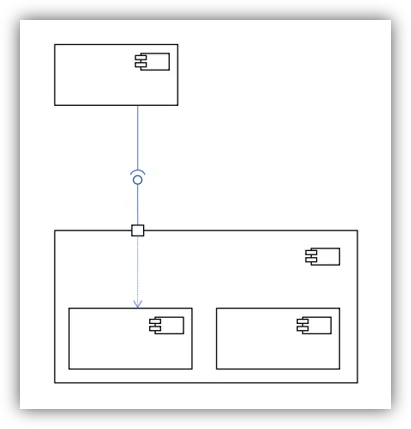
The Class Diagram
- Shows classes
- Shows methods and fields
- Shows associations, generalizations and cardinality
- Quite detailed in terms of implementation
- The Lead Developer should do this
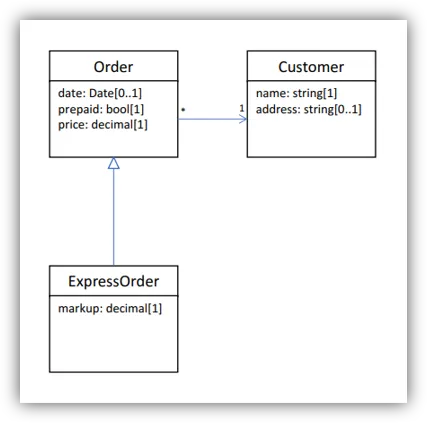
The Sequence Diagram
- Shows call sequence
- Shows calling class, called method and return data type
- Can depict loops
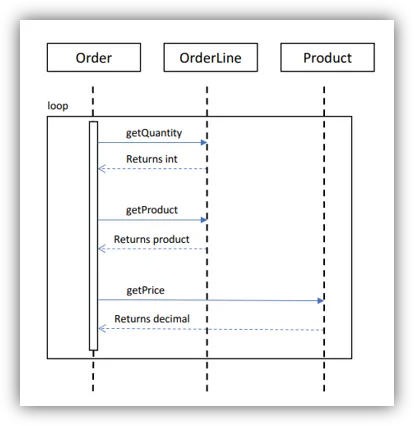
The State Diagram
- Shows states or activities
- Shows allowed transitions
- Can be nested
- Can depict internal activities
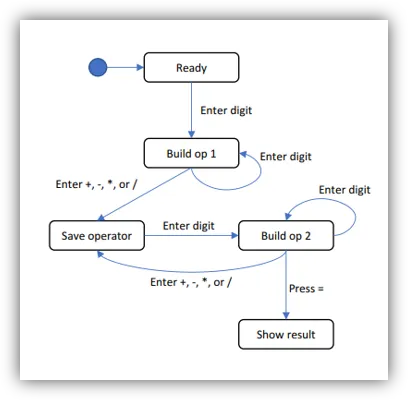
The Activity Diagram
- Shows process or workflow
- Like the famous flow charts
- Can be nested
- Can show concurrent actions
- Can have swim lanes
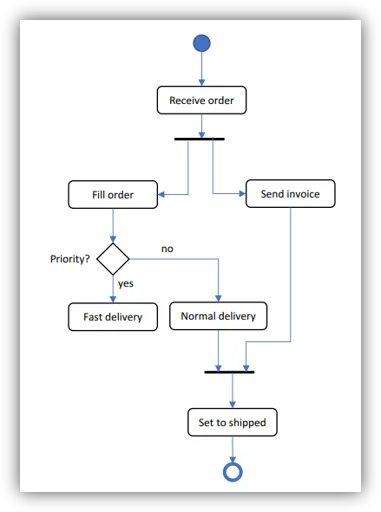
The Layer Diagram
- Non-standard, invented by MS
- Shows areas of concern
- Shows references between areas
- Can be validated
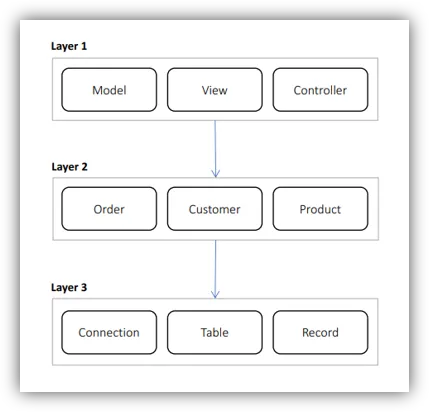
The Use Case Diagram
- Shows actors
- Shows use cases
- Binds actors to use cases
- Can depict generalizations
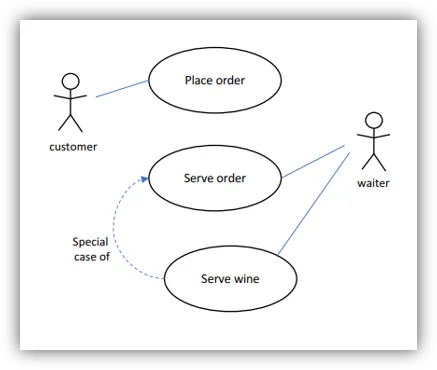
UML Diagrams In Architectures
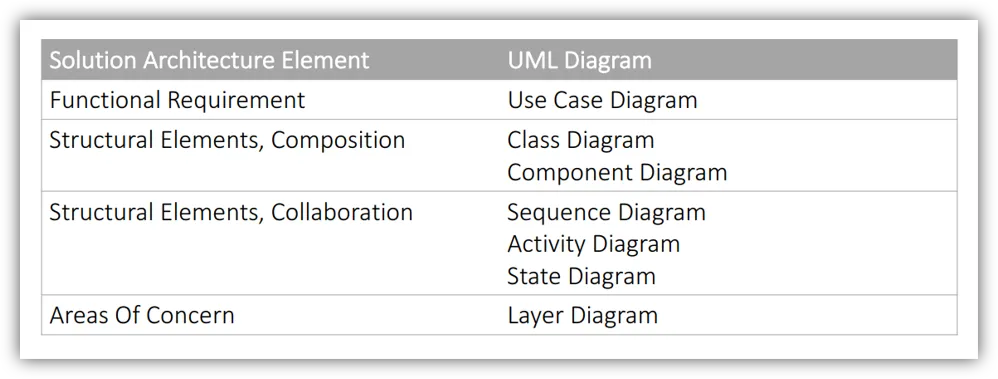
- UML as Sketch
- Intended for brainstorming and general loose guidelines
- UML as Blueprint
- Very detailed, you can write code based on the diagrams
- Forward Engineering - use diagram to generate code
- Reverse Engineering - build diagram from existing code
- UML as Validation
- Validate implementation against diagram
The Process For Designing Architectures
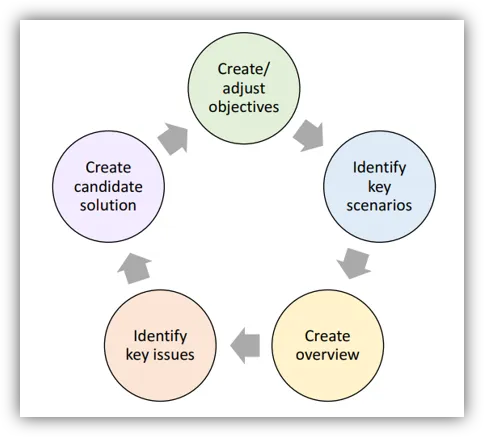
Create Or Adjust Objectives
- Identify scope of architecture
- What are the high-level objectives and requirements?
- New technologies? Server? Client? Proof of concept?
- Estimate time to spend
- Do you have months? Do you have weeks?
- Identify audience
- CEO? Developers? Functional Analyst?
- Identify technical, usage and deployment constraints
- What are the available technologies?
- How many people use the system simultaneously?
- How many servers do you have? Cloud? On premise?
- These requirements are super important!
Identify Key Scenarios
-
Key scenarios:
- Significant unknown/risk – promo codes on scale
- Significant use case – payments integration
- Intersection of quality/function – clashing of these two attributes
- Tradeoff between attributes – consider the trade offs
-
Significant use cases:
- Business-critical – part of the core business domain
- High impact – very important for the end-users
-
Create Use Case Diagrams
Two types of requirements
-
Functional
- Business flows
- What the user should do
- User interfaces
- And many more…
-
Non-functional
- Performance
- Load
- Data volume
- Concurrent users
- SLA
- These are the most common ones
Performance requirements
- “What is the required performance of the system?”
- “SUPER FAST!”
- Always talk in numbers!
- For example, if you have an end user – each task should complete in less than a second!
- Think about latency
- How much time does it take to perform a single task?
- How much time will it take to store a user in the database?
- Think about throughput
- How many tasks can be performed for a given time unit?
- How many users can be saved in the database in a minute?
Performance numbers Example
- Let’s say we have a task
- Storing a user in database
- And its latency is 1 second
- This is quite slow, but it is just a demonstrational number
- What is the throughput for 1 minute then?
- In a well-designed system – more than 1000 users
- In a badly designed system – around 60 users
- Both attributes are important!
Load requirements
- Load is quantity of work without crashing
- In a Web API – how many concurrent requests could the server handle without crashing
- Difference with throughput:
- Throughput – 100 requests/second
- Load – 500 requests without crashing
- Users can tolerate a bit slow system
- But they hate crashing ones!
- Best practice is to always plan for the most extreme cases!
- For example – Black Friday in an e-commerce site!
Data volume requirements
- How much data the system will accumulate over time
- This requirement dictates:
- The database type
- Designing queries in the database
- Storage planning
- Two aspects:
- Data required on “day one”
- For example – initially we need 1 GB of data
- Data required on “day one”
- Data growth
- For example – our database grows annually with 2 TB of data
Concurrent users requirements
- How many users will use the system simultaneously
- It is different than the load requirements
- Concurrent users have “dead times”
- They read the page, watch something on it, but do not make requests
- Load requirements consider the actual requests
- The rule of thumb is to take the load requirements
- And multiple them by 10!
- But this depends on the system type
Service Level Agreement requirements
- What is the required uptime for the system in percentage
- For example, 99.99% uptime
- This is translated to ~1 hour of downtime in a year
- It would be quite impressive!
- It is the solution’s architect to manage the clients’ expectations
- If the expected uptime is 99.999%
- Just tell them that we will need at least five different data centers
- On independent continents
- With variety of power supplies
- And multiple Internet providers
- This answer usually brings them down to Earth?
Who defines these requirements?
- The Functional Analysts and the CEO usually provide a well documented business and functional requirements of the system
- But who defines the non-functional ones?
- It is the Solution’s Architect job to frame them
- By starting discussions
- And asking the right questions
- And keeping the expectations realistic and meaningful
- There is no need to fight for every millisecond
- The users will not notice that
- It is the Solution’s Architect job to frame them
- Never design a system without the non-functional requirements!